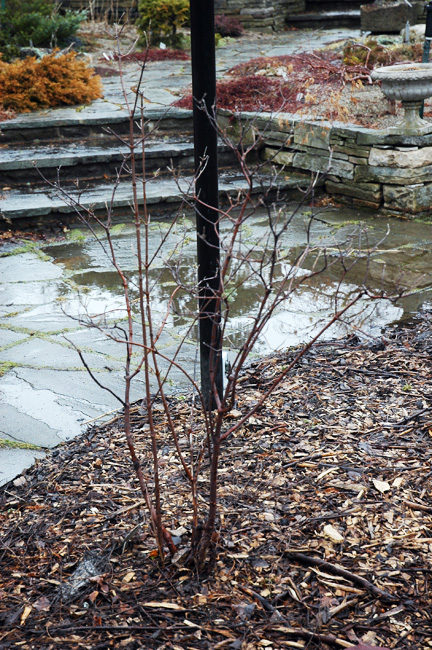
Woody > Viburnum > Viburnum cassinoides > Viburnum cassinoides
Viburnum cassinoides
Witherod Viburnum
Origin: Newfoundland to Manitoba; Minnesota to Georgia to Florida; introduced 1761.
Mike's
Opinion


"
This is a plant that is tolerant of less than ideal garden conditions. It has large showy flowers. The berries produced by this plant are said to taste similar to blueberries. It is great for grouping and adds a nice touch to a native garden. However, as of late it has been devastated by the European Viburnum Leaf Beetle, hence I would not now recommend its inclusion in the landscape until the pest problem has subsided.
Michael Pascoe, NDP., ODH., CLT., MSc. (Plant Conservation)
"
| Family |
| Adoxaceae (Caprifoliaceae) |
| Genus |
| Viburnum |
| Species |
| cassinoides |
| Category |
| Woody |
| Type |
| Shrub (deciduous) |
| Pronunciation |
| USDA Hardiness Zone |
| 3-8 |
| Canadian Hardiness Zone |
| 4-9 |
| Temperature (°C) |
| -37 |
| Temperature (°F) |
| -35 |
| Height |
| 1.5-1.8 m |
| Spread |
| 1.5-3 m |
Photographs
Description and Growing Information
Flowering Period
| General Description |
| This is a wonderful plant with clusters of off-white flowers that bloom in June to early July. This plant has showy fruit as well, that start off white then pink, turning purple when ripe. Attracts wildlife to the garden. |
| Landscape |
| This plant is very vigorous so it may be used for mass plantings, borders and naturalizing as well as screens. It attracts birds because of its fruit. |
| Cultivation |
| This plant is very easy to grow and very easy to transplant. It requires well drained to slightly mosit, acidic soil; although in nature it grows in wet soils with a high pH. May need hand pruning for rejuvenation after flowering. |
| Shape |
| A dense multi-stemmed shrub, with a rounded crown and arching branches. |
| Growth |
| Fast |
| ID Characteristic |
| Fruit has blue-black berries in flat clusters. A dense twiggy shrub with a suckering tendency. Flat clusters of off-white flowers. Vegetative buds are valvate, long and narrow. |
| Pests |
| European viburnum leaf beetle is a major and often devastating pest. |
| Habitat |
| Native to North Eastern Ontario as well as North Eastern and Southern United states in wet, open woo |
| Bark/Stem Description |
| Young twigs are brown and scruffy, as the shrub reaches maturity its bark becomes glaborous and grey. |
| Flower/Leaf Bud Description |
| Flower buds are valvate similar to V. lentago. Vegetative buds are also valvate and long and narrow; 1.1-2.2 cm. |
| Leaf Description |
| Simple, opposite, tough to leathery feel, the leaves are pinnately-veined. Leaves are variable ranging from elliptic to ovate but elliptic leaves are most common. Leaves are 2.5-15 cm long and 1.5-6 cm wide, glaborous, dark green and lustrous. |
| Flower Description |
| Showy, off-white flowers in 4.5 to 11.2 cm arching cymes. The individual inflorescence is 0.5-.6 cm in diameter. The flowers get their colour from the yellowish stamens. Blooms in June to early July. |
| Fruit Description |
| An obvoid berry 6-9 mm with one seed inside. They begin white turning pink then when fully ripe they turn black to purple and wrinkled. Edible berry with sweet pulp becomes fully ripe late in summer to September. |
| Colour Description |
| This plant has phenomenal colour starting off as a dull darker green foliage changing to a red-orange colour to a dull crimson-purple in the autumn. The new leaves are often bronze or purple-tinted. |
| Texture Description |
| Medium; over time becomes smooth. |
| Propagation |
| Harvest green seed just before fully ripened, must be put in a cold frame right away. It should germinate in spring. When the seed is stored it requires 2 months at 30°C warm then 3 months cold stratification 5°C to germinate. |
References
Degroots Nurseries, Sarnia, Ontario, Glen-Echo Nurseries, Caledon, Ontario.
.jpg)
.jpg)
